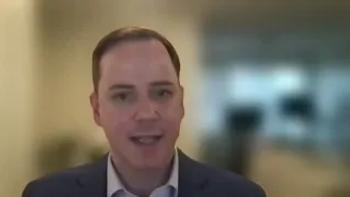
Drug pipeline developments: Alopecia areata and atopic dermatitis
Promising treatments are coming for alopecia areata and atopic dermatitis, but they will come at a high cost.
More than 6.8 million Americans have, had or will develop alopecia areata at some point in their lives, according to the
Alopecia areata differs from male/female pattern baldness in that it is driven by an underlying autoimmune disorder, whereby male/female pattern baldness is determined by imbalanced sex hormones (e.g., estrogen, progesterone and testosterone) and excess inflammation.
WongEczema refers to a group of dermatological conditions characterized by skin inflammation. Atopic dermatitis is one type of chronic eczema that produces symptoms such as dry, scaly skin, redness, itching and rash. According to the
Hair loss and skin problems are not the only detriments associated with alopecia and atopic dermatitis. Individuals with these conditions may suffer from other comorbidities, including allergic rhinitis, asthma, food allergies, eye disease, obesity, anemia, and some psychiatric or mood disorders, according to Farrah Wong, PharmD, director of pipeline and drug surveillance at OptumRx.
Current treatments
According to the American Academy of Dermatology, there is no cure for alopecia areata; hair often re-grows on its own but treatment can help the hair re-grow more quickly. Current treatments include systemic or topical corticosteroids, topical minoxidil, and topical anthralin.
As with alopecia, treatment cannot cure atopic dermatitis but it can help control symptoms. Current treatments include over-the-counter (OTC) moisturizers, systemic or topical corticosteroids, and topical calcineurin inhibitors (TCIs), nonsteroidal medications that are applied to the parts of the affected skin. Once absorbed in the skin, TCIs work by stopping a piece of the immune system from “switching on,” preventing it from causing certain eczema symptoms such as redness and itch.
TCIs, including tacrolimus and pimecrolimus, are generally reserved for after topical prescription corticosteroids have failed in patients with atopic dermatitis, according to Craig Mattson, RPh, senior director of formulary development at Prime Therapeutics.
At Prime Therapeutics, Mattson says that most plans do not pay for OTC drugs, nor do they pay for drugs whose use are primarily cosmetic.
Rosier“The categorization and definitions as ‘cosmetic’ or ‘discretionary’ vary from plan sponsor to plan sponsor and insurer to insurer,” says Nadina Rosier, health and group benefits practice leader at Willis Towers Watson. “Most plan sponsors generally cover legend products or non-OTC treatments of dermatological conditions, but may require pre-certification or prior authorization coupled with quantity limits to ensure the drugs are used appropriately.”
OTC products generally have been excluded from plan sponsor coverage in this therapeutic class, explains Rosier. One example of a generally excluded product labeled as “cosmetic” is topical minoxidil, or Rogaine, used for alopecia areata.
It should be noted however that some of these products such as minoxidil have not been tested and may not be recommended in those under the age of 18 years.
Pipeline treatments
Alopecia areata and atopic dermatitis have traditionally been treated with both oral and topical “non-specialty” drugs; however, according to Rosier, several specialty biologic agents are currently in development that have the potential to significantly increase both plan sponsor and member treatment costs.
The most promising pipeline drugs for alopecia include the Janus kinase (JAK) inhibitors, which are used to modulate gene expression and immune function. Aclaris Therapeutics, Inc. recently acquired the rights to two preclinical JAK drugs for alopecia and other dermatological conditions, including both an oral (ATI-50001) and topical (ATI-50002) JAK inhibitor.
Concert Pharmaceuticals, Inc. has another oral JAK inhibitor, CTP-543, currently in clinical trials for use in alopecia. CTP-543 is a modified version of ruxolitinib (Jakafi), which is currently indicated for the treatment of myelofibrosis and polycythemia vera.
Other drugs currently being studied in patients with alopecia include secukinumab, a monoclonal antibody used in plaque psoriasis, and abatacept, an antirheumatic agent currently used in arthritis. According to Rosier, there is also an ongoing phase 4 study of intralesional triamcinolone in the treatment of alopecia.
There are many new agents in development for atopic dermatitis as well. According to Mattson, the two pipeline treatments closest to approval are crisaborole and dupilumab. Crisaborole is a topical anti-inflammatory ointment, developed by Anacor Pharmaceuticals, with possible approval in 2017 for the treatment of mild-to-moderate atopic dermatitis in children and adults.
Dupilumab (Regeneron Pharmaceuticals, Inc. and Sanofi), which was granted “breakthrough status” by FDA, is a monoclonal antibody directed against the interleukin-4 receptor thought to mediate inflammation in atopic dermatitis. If approved, dupilumab could become the first specialty drug indicated for the disease. In April 2016, the manufacturers announced that the drug met primary end points of two phase 3 studies and significantly improved measures of overall disease severity, skin clearing, itching, quality of life, and mental health.
Two other drugs in phase 2 clinical trials for atopic dermatitis include apremilast (Otezla, Celgene) for psoriasis and psoriatic arthritis, and rheumatoid arthritis drug baricitinib (Eli Lilly), a JAK inhibitor.
Coverage issues
Another question arises as to how these new agents will be reviewed and managed in the care of both children and adults with alopecia areata or atopic dermatitis.
“OptumRx will review these drugs using the same principles as other specialty products,” says Wong. “Reviews are based on key factors, including clinical efficacy, safety profile, dosing and administration, alternative treatment options, and treatment guidelines/recommendations.”
According to Rosier, possible strategies to manage therapy of alopecia and atopic dermatitis include implementation of pre-certification, step therapy, or quantity limitations that ensure clinically appropriate use of dermatological agents.
Because many of the current therapies for alopecia and atopic dermatitis are available generically, Mattson expects that the approval of biologic agents to treat these conditions will increase the cost of care and will also require evaluation of cost effectiveness. Mattson further explains that new biologic agents lacking long-term safety data will likely be reserved for patients with inadequate response to known safe and effective therapies.
As for the pediatric and young adult populations, Mattson says that the use of new biologics will be guided by the drugs’ clinical trial programs and FDA approvals. Rosier further explains that if the drugs are FDA approved for the pediatric population, then they would be covered for children, provided other utilization management criteria are met. This management approach is consistent with other categories that treat both pediatric and adult patients.
“Dermatology is one of the fastest growing areas of healthcare. Employer pharmacy spend on this category continues to increase, primarily due to inflation and the introduction of specialty products as a substitute for treatment that were historically a mere fraction of the cost,” says Rosier. “Similar to other therapy classes where modern medicine and technology have paved the way for the introduction of newer and more clinically effective therapies, the medical community will begin to transition from a preferred treatment protocol of non-specialty drugs to one that has more-expensive biologic agents.”
Erin Bastick, PharmD, RPh, is a graduate intern at University Hospitals Elyria Medical Center in Elyria, Ohio.
Newsletter
Get the latest industry news, event updates, and more from Managed healthcare Executive.




















































